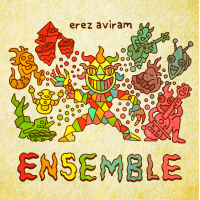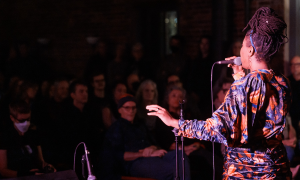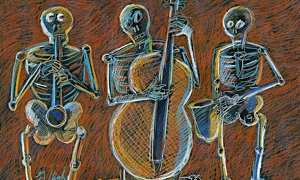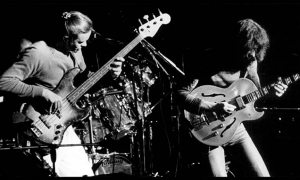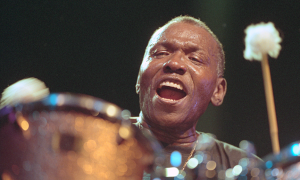Home » Jazz Articles » What is Jazz? » Coltrane's Progeny: Giant Steps for Late Beginners
Coltrane's Progeny: Giant Steps for Late Beginners
The great bassist Jimmy Haslip once said that hearing Jaco Pastorius play was like a nuclear explosion in his mind. For me, "Giant Steps" had the same effect. I was not a saxophonist, and came to Coltrane rather late, largely out of Swing music. My reaction to "Giant Steps" was, nevertheless, not uncommon. I was simply stunned because I had no idea you could play a saxophone like that.
It is always interesting to see what different artists of different backgrounds, training, temperament and even life experience make of someone's music. You would suspect, or like to think, that the more profound someone's art is, the more varied its influence might be on others of different sensibilities. There may be, to a listener at least, more or less congenial ways to play a tune. But rarely, if ever, will you find someone say you can't play something a certain way. It has happened, such as Maynard Ferguson's controversial 1949 recording of "All The Things You Are" with Charlie Barnet. Are there many other cases like that? I do not know. Did Jaki Byard ask Coltrane how to play it in 1961? I doubt it.
One measure of the influence, depth and transformative power of Coltrane' "Giant Steps" is to hear what some other artists have made of it. Since there are well over 200 covers of the tune, you do have a wide choice. There is a case to be made that "Giant Steps" is one of the most influential jazz recordings ever on that basis alone. What follows is not a history, much less a technical analysis. That I leave to others with the chops to do both justice. Here are the ways in which ten (actually more) very accomplished artists have interpreted it. I list them in no particular order. There is no favorite, although . Indeed, you may well have an entirely different version in mind. I hope some comments may highlight versions not listed. Have some fun with the plasticity of genius. We can all learn something from each other. Oh, and if you're curious about the (supposed) story of Tommy Flanagan's awkward intervention in Trane's original, you can find it here. Enjoy.
Rahsaan Roland Kirk. This is a kind of "genius speaks to genius" version
Scotty Barnhart. NOLA meets Trane
Terry Gibbs and Buddy DeFranco. A master class from two boppers.
Michel Petrucciani. What a band.
Camille Bertault. Scat from the French vocalist. Talk about extraordinary.
World Saxophone Quartet. Chamber music meets jazz saxophone.
Tete Montoliu, True to Coltrane but pure Tete.
Bob Mintzer & Michael Brecker. No comment required, right?
Niels-Henning Orsted Pedersen and Sam Jones. Everybody listened to Coltrane. Everybody.
Tommy Flanagan. We all deserve a second chance, right?
Tags
What is Jazz?
Richard J Salvucci
John Coltrane
bob mintzer
Michael Brecker
Niels-Henning Orsted Pedersen
Tommy Flanagan
Camille Bertault
World Saxophone Quartet
Buddy DeFranco
Terry Gibbs
Michel Petrucciani
Scotty Barnhart
Rahsaan Roland Kirk
Tete Montoliu
Sam Jones
PREVIOUS / NEXT
Support All About Jazz
 All About Jazz has been a pillar of jazz since 1995, championing it as an art form and, more importantly, supporting the musicians who make it. Our enduring commitment has made "AAJ" one of the most culturally important websites of its kind, read by hundreds of thousands of fans, musicians and industry figures every month.
All About Jazz has been a pillar of jazz since 1995, championing it as an art form and, more importantly, supporting the musicians who make it. Our enduring commitment has made "AAJ" one of the most culturally important websites of its kind, read by hundreds of thousands of fans, musicians and industry figures every month.













